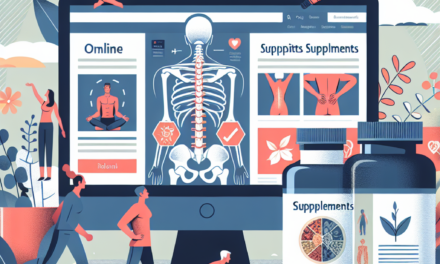Navigating Access Management in Healthcare: Comparing IAM, PAM, and MFA

In the rapidly evolving landscape of healthcare, ensuring the security and privacy of sensitive patient data is paramount. With the increasing digitization of healthcare records and the integration of advanced technologies, healthcare organizations face significant challenges in managing access to their systems and data. Access management solutions such as Identity and Access Management (IAM), Privileged Access Management (PAM), and Multi-Factor Authentication (MFA) have become essential tools in safeguarding healthcare information. This article delves into the intricacies of these access management solutions, comparing their functionalities, benefits, and implementation strategies in the healthcare sector.
Understanding Identity and Access Management (IAM) in Healthcare
Identity and Access Management (IAM) is a framework of policies and technologies that ensures the right individuals have access to the right resources at the right times for the right reasons. In the healthcare sector, IAM plays a crucial role in managing user identities and controlling access to sensitive patient data and healthcare systems.
The Role of IAM in Healthcare
IAM systems are designed to streamline the process of managing user identities and access permissions. In healthcare, this involves managing a diverse range of users, including doctors, nurses, administrative staff, and external partners. IAM solutions help healthcare organizations:
- Ensure compliance with regulations such as HIPAA and GDPR by controlling access to patient data.
- Reduce the risk of data breaches by implementing strong authentication and authorization mechanisms.
- Improve operational efficiency by automating user provisioning and de-provisioning processes.
For example, a hospital can use IAM to automatically grant access to specific systems and data based on a user’s role, ensuring that a nurse has access to patient records relevant to their department but not to financial data.
Challenges in Implementing IAM in Healthcare
Despite its benefits, implementing IAM in healthcare comes with its own set of challenges. One major challenge is the complexity of healthcare IT environments, which often include a mix of legacy systems and modern applications. Integrating IAM solutions with these disparate systems can be difficult and time-consuming.
Another challenge is ensuring user adoption. Healthcare professionals are often resistant to change, and introducing new access management processes can be met with resistance. To overcome this, healthcare organizations must invest in training and change management initiatives to ensure smooth adoption of IAM solutions.
Case Study: Successful IAM Implementation in a Healthcare Organization
Consider the case of a large healthcare provider that implemented an IAM solution to manage access to its electronic health record (EHR) system. By integrating IAM with its EHR, the organization was able to automate user provisioning and de-provisioning, reducing the time required to grant access to new employees from days to hours. Additionally, the IAM solution provided detailed audit logs, helping the organization meet compliance requirements and quickly identify any unauthorized access attempts.
Future Trends in IAM for Healthcare
As healthcare organizations continue to adopt digital technologies, the role of IAM will become increasingly important. Future trends in IAM for healthcare include the use of artificial intelligence and machine learning to enhance identity verification processes and detect anomalous access patterns. Additionally, the rise of telehealth and remote work will drive the need for more robust IAM solutions that can securely manage access to healthcare systems from anywhere in the world.
Exploring Privileged Access Management (PAM) in Healthcare
Privileged Access Management (PAM) is a subset of IAM that focuses on controlling and monitoring access to critical systems and data by privileged users. In healthcare, PAM is essential for protecting sensitive patient information and ensuring that only authorized personnel have access to critical systems.
The Importance of PAM in Healthcare
Privileged users, such as system administrators and IT staff, have elevated access rights that allow them to perform critical tasks, such as configuring systems and accessing sensitive data. If these accounts are compromised, it can lead to significant data breaches and operational disruptions. PAM solutions help healthcare organizations:
- Enforce the principle of least privilege by granting users only the access they need to perform their job functions.
- Monitor and record privileged user activities to detect and respond to suspicious behavior.
- Implement strong authentication mechanisms to protect privileged accounts from unauthorized access.
For instance, a healthcare organization can use PAM to ensure that only authorized IT staff can access the server hosting the EHR system, and all access attempts are logged and reviewed for compliance purposes.
Challenges in Implementing PAM in Healthcare
Implementing PAM in healthcare can be challenging due to the complexity of healthcare IT environments and the need to balance security with operational efficiency. One challenge is identifying all privileged accounts and ensuring they are properly managed. This requires a comprehensive inventory of all systems and applications, which can be time-consuming and resource-intensive.
Another challenge is ensuring that PAM solutions do not disrupt critical healthcare operations. Healthcare organizations must carefully plan and test PAM implementations to ensure that they do not interfere with the delivery of patient care.
Case Study: PAM Implementation in a Healthcare Setting
A regional healthcare network implemented a PAM solution to secure its critical systems and data. By deploying PAM, the organization was able to enforce strict access controls on its EHR system, ensuring that only authorized personnel could access sensitive patient data. The PAM solution also provided real-time monitoring and alerting capabilities, allowing the organization to quickly detect and respond to any unauthorized access attempts.
Future Trends in PAM for Healthcare
As cyber threats continue to evolve, the role of PAM in healthcare will become increasingly important. Future trends in PAM for healthcare include the use of behavioral analytics to detect anomalous user behavior and the integration of PAM with other security solutions, such as Security Information and Event Management (SIEM) systems, to provide a more comprehensive security posture.
The Role of Multi-Factor Authentication (MFA) in Healthcare
Multi-Factor Authentication (MFA) is a security mechanism that requires users to provide multiple forms of verification before gaining access to a system or data. In healthcare, MFA is a critical component of access management, providing an additional layer of security to protect sensitive patient information.
The Benefits of MFA in Healthcare
MFA enhances security by requiring users to provide two or more forms of verification, such as a password and a fingerprint scan, before accessing a system. This makes it more difficult for unauthorized users to gain access, even if they have obtained a user’s password. The benefits of MFA in healthcare include:
- Reducing the risk of data breaches by adding an extra layer of security to user authentication processes.
- Enhancing compliance with regulations that require strong authentication mechanisms to protect patient data.
- Improving user confidence in the security of healthcare systems and data.
For example, a healthcare organization can implement MFA to protect access to its EHR system, requiring users to enter a password and a one-time code sent to their mobile device before accessing patient records.
Challenges in Implementing MFA in Healthcare
While MFA provides significant security benefits, implementing it in healthcare can be challenging. One challenge is ensuring user adoption, as healthcare professionals may be resistant to the additional steps required for authentication. To address this, healthcare organizations must provide training and support to help users understand the importance of MFA and how to use it effectively.
Another challenge is integrating MFA with existing systems and applications. Healthcare organizations often have a mix of legacy and modern systems, and integrating MFA with these systems can be complex and time-consuming.
Case Study: MFA Implementation in a Healthcare Organization
A large hospital implemented MFA to enhance the security of its EHR system. By requiring users to provide a password and a fingerprint scan before accessing patient records, the hospital was able to significantly reduce the risk of unauthorized access. The MFA solution also provided detailed audit logs, helping the hospital meet compliance requirements and quickly identify any unauthorized access attempts.
Future Trends in MFA for Healthcare
As cyber threats continue to evolve, the role of MFA in healthcare will become increasingly important. Future trends in MFA for healthcare include the use of biometric authentication methods, such as facial recognition and voice recognition, to provide more secure and user-friendly authentication processes. Additionally, the rise of telehealth and remote work will drive the need for more robust MFA solutions that can securely manage access to healthcare systems from anywhere in the world.
Comparing IAM, PAM, and MFA in Healthcare
While IAM, PAM, and MFA are all critical components of access management in healthcare, they serve different purposes and offer unique benefits. Understanding the differences between these solutions is essential for healthcare organizations looking to implement effective access management strategies.
IAM vs. PAM vs. MFA: Key Differences
IAM is a comprehensive framework that encompasses all aspects of identity and access management, including user provisioning, authentication, and authorization. PAM, on the other hand, focuses specifically on managing and securing privileged accounts, which have elevated access rights to critical systems and data. MFA is a security mechanism that adds an extra layer of authentication to ensure that only authorized users can access a system or data.
While IAM provides a broad approach to access management, PAM and MFA offer more targeted solutions for specific security challenges. For example, PAM is essential for protecting privileged accounts from unauthorized access, while MFA provides an additional layer of security for user authentication processes.
Integrating IAM, PAM, and MFA in Healthcare
To achieve comprehensive access management in healthcare, organizations should consider integrating IAM, PAM, and MFA solutions. By combining these solutions, healthcare organizations can:
- Ensure that all users have the appropriate access rights based on their roles and responsibilities.
- Protect privileged accounts from unauthorized access and monitor their activities for suspicious behavior.
- Add an extra layer of security to user authentication processes to reduce the risk of data breaches.
For example, a healthcare organization can use IAM to manage user identities and access permissions, PAM to secure privileged accounts, and MFA to enhance the security of user authentication processes.
Case Study: Integrated Access Management in a Healthcare Organization
A large healthcare provider implemented an integrated access management solution that combined IAM, PAM, and MFA. By integrating these solutions, the organization was able to streamline its access management processes, reduce the risk of data breaches, and enhance compliance with regulations. The integrated solution also provided detailed audit logs, helping the organization quickly identify and respond to any unauthorized access attempts.
Future Trends in Integrated Access Management for Healthcare
As healthcare organizations continue to adopt digital technologies, the need for integrated access management solutions will become increasingly important. Future trends in integrated access management for healthcare include the use of artificial intelligence and machine learning to enhance identity verification processes and detect anomalous access patterns. Additionally, the rise of telehealth and remote work will drive the need for more robust integrated access management solutions that can securely manage access to healthcare systems from anywhere in the world.
Conclusion: Navigating Access Management in Healthcare
In conclusion, navigating access management in healthcare requires a comprehensive approach that combines IAM, PAM, and MFA solutions. Each of these solutions offers unique benefits and addresses specific security challenges, making them essential components of a robust access management strategy. By understanding the differences between IAM, PAM, and MFA and integrating these solutions, healthcare organizations can enhance the security of their systems and data, reduce the risk of data breaches, and ensure compliance with regulations.
As the healthcare sector continues to evolve, the role of access management will become increasingly important. Future trends in access management for healthcare include the use of advanced technologies, such as artificial intelligence and machine learning, to enhance security and streamline access management processes. By staying ahead of these trends and implementing effective access management strategies, healthcare organizations can protect sensitive patient information and ensure the delivery of high-quality care.




